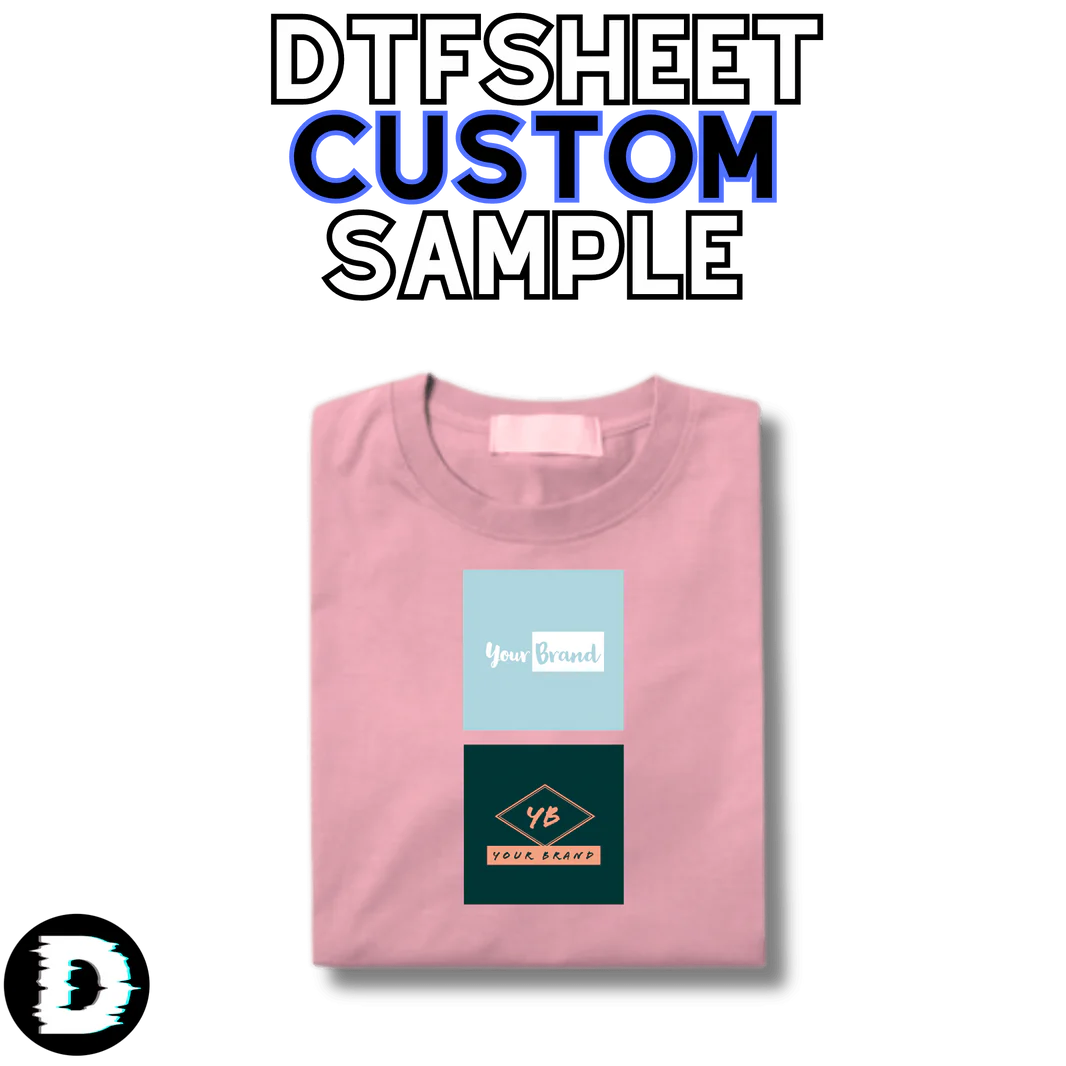What’s the Hype Around DTF Transfer Paper?
Okay, let’s talk about the newest kid on the custom printing block: DTF transfer paper. No, it’s not a new boy band or a TikTok dance trend (though we’d pay good money to see a DTF dance-off). It’s Direct to Film magic, and it’s changing the game for people who want their prints to pop, stick, and survive the wild ride through the laundry.
Whether you’re a crafty wizard in your garage, a small biz boss, or the MVP of your local print shop, DTF transfer paper might just be your new BFF. Why? Because it’s easy, it’s pretty, and it doesn’t make you want to throw your printer out a window.
So, What Is DTF Transfer Paper?
Imagine a piece of film that’s like, “Hey, I’ll hold your masterpiece, protect it with a special coating, and transfer it to pretty much any fabric you throw at me.” That’s DTF transfer paper.
It’s made of:
-
A clear PET film base (the sturdy stuff)
-
A special coating that holds onto ink and adhesive powder like it’s the last slice of pizza
-
A release liner that helps everything go on smooth like butter
And here’s where it wins gold medals:
-
No cutting, no weeding—hallelujah
-
Works on cotton, poly, canvas, blends, leather... maybe even your hopes and dreams
-
Full-color prints with crisp details and sweet, sweet gradients
How DTF Transfer Paper Works (It’s Not Rocket Science)
If you can make a sandwich, you can probably figure this out:
-
Print your design on the matte side of the film (not the shiny “I’m too cool for ink” side).
-
Sprinkle hot melt adhesive powder like you're seasoning your favorite fries.
-
Cure the film with a heat press or curing oven (think warm hug, not firestorm).
-
Press it onto your fabric with heat and pressure.
-
Peel the film off—hot or cold, depending on the type. (We all have our preferences, okay?)
Voilà. It’s on there. It’s sticking. It’s fab.
DTF Transfer Paper vs. The Other Guys
Let’s be real. We all have exes. DTF transfer paper is the glow-up:
| Method | Works on Cotton? | Requires Weeding? | Colors | Durability |
|---|---|---|---|---|
| DTF Transfer Paper | ✅ Yes | ❌ Nope | 🌈 All the colors | ✅ Lasts forever-ish |
| Sublimation Paper | ❌ Nope (poly only) | ❌ Nope | 🌈 Rainbow vibes | ✅ Strong |
| Heat Transfer Vinyl | ✅ Yes | ✅ Ugh, yes | 🎨 Limited (layer by layer like a lasagna) | 🤷♀️ Meh |
| Screen Printing | ✅ Yes | ❌ Nope | 🎯 Limited (per screen) | ✅ Battle-tested |
DTF wins in the “don’t make me cry while crafting” category.
How to Choose the Right DTF Paper (Because Not All Film Is Created Equal)
Here’s the lowdown on what to look for when picking your DTF soulmate:
-
Thickness: Thicker films are like weighted blankets—they just feel right. And they look better too.
-
Coating Quality: Uneven coating? Bye. You want smooth, even layers so your ink doesn’t throw a tantrum.
-
Hot vs. Cold Peel: Hot peel is quick; cold peel is precise. It’s the tortoise vs. the hare situation.
-
Sizes: Go big or go home, or stick with A3/A4 if you’re just vibing.
-
Printer Compatibility: Don’t force a relationship. Make sure your paper and printer are on the same wavelength.
Top picks in the DTF world:
-
SubliNova PET Film Sheets – Reliable like your favorite hoodie
-
Procolored A3 Hot Peel Film – Spicy, speedy, and smooth
-
ColorMax Cold Peel Rolls – A little more chill, but super sharp
When DTF Paper Acts Up (Don’t Panic)
Look, even the best DTF paper has drama sometimes. Here’s how to squash it:
-
Film sticking to fabric? Chill with the peel time or adjust the pressure.
-
Faded prints? Your ink might be ghosting you. Check levels and make sure curing is complete.
-
Powder not sticking? Your ink might be too dry. Reignite that spark.
-
Smudges or ghosting? Hands off the film until it's fully cured. Seriously, no touching.
Where to Buy DTF Transfer Paper Without Selling Your Soul
Places that won’t make you question your life choices:
-
Online: DTFSheet.com,
-
Local: Google “DTF transfer film near me” (then pretend you're a detective)
-
Wholesale: For when your business is booming and you're printing like a maniac
Look for places with reviews that aren’t obviously written by bots named Kevin, fast shipping, and the option to test samples before you commit.
Beginner Tips (AKA Stuff I Wish Someone Told Me Sooner)
-
Keep it cool and dry—DTF hates humidity like cats hate baths
-
Use PNGs with transparent backgrounds at 300 DPI. Pixelated blobs are so 2002.
-
Gang sheet like a boss. Fit more designs per sheet = win.
-
Always test print before you commit. Trust issues? Maybe. Smart? Definitely.
FAQs: The DTF Curious Edition
Can I use any printer for DTF?
Nope. DTF printers have special ink and software. Your office HP will not rise to the occasion.
What temp and time do I press at?
Usually 300–320°F for 8 seconds. But don’t wing it—check your paper's instructions.
Is DTF film reusable?
Nope. One hit wonder. Use it, love it, say goodbye.
What’s the shelf life?
About 12 months if stored like it’s a fine wine (cool, dry, upright).
Do I need adhesive powder every time?
Yes, it’s the peanut butter to your jelly. No powder, no stick.
Should You Try DTF Transfer Paper?
Absolutely. If you’re in the print game and want vibrant, long-lasting designs without the weeding drama or material limits, DTF is your ride-or-die.
Get the paper, prep the prints, and press like a pro. You’ll thank yourself. Probably in bold, full-color letters.




























